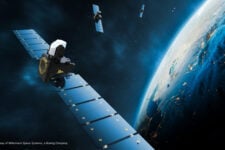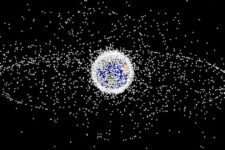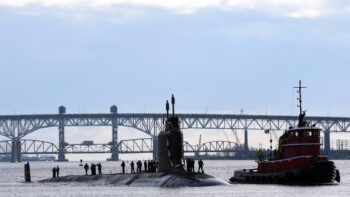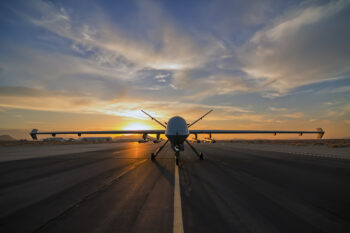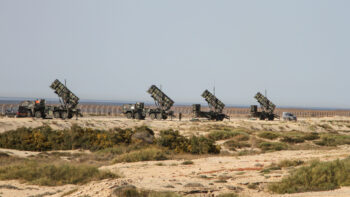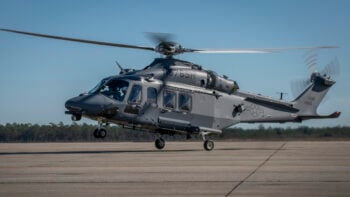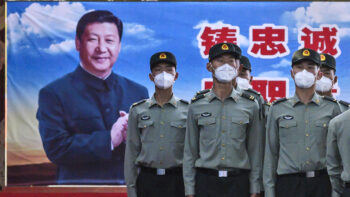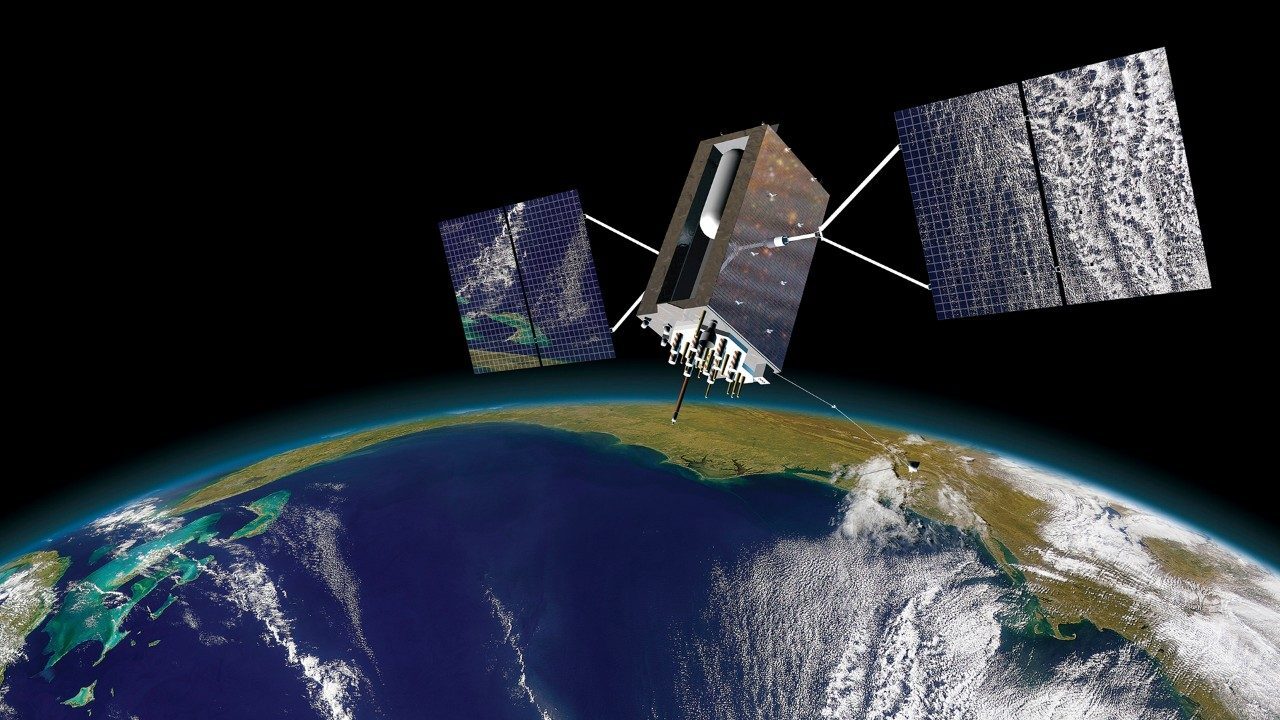
GPS III satellite, (Lockheed Martin image)
AFA 2023 — The Space Force is experimenting with a new organizational structure, putting both operations and sustainment activities for specific mission areas under a single leader, Chief of Space Operations Gen. Chance Saltzman said today.
“The Space Force has started two proofs of concept we call Integrated Mission Deltas, or IMDs, for both operations and sustainment for mission areas that are under a single commander. One IMD prototype is supporting the electromagnetic warfare mission. The other IMD prototype is a new organization to support precision navigation and timing,” he told the annual Air Force Association Air, Space & Cyber Conference.
Delta’s are the Space Force equivalent to the Air Force numbered air forces.
“It’s essential that all elements of readiness — the people, the training, the equipment and the sustainment — fall into the same organizational structure, and that we create unity of command around those elements at the lowest possible level,” Saltzman added.
At the moment, he explained in subsequent remarks to reporters here, responsibility for allocating personnel and training them falls to the Space Operations Command (SpOC), while Space Systems Command (SSC) is largely responsible for acquisition and sustainment. The new IMDs will pool all those functions under one colonel’s command. In addition, the IMDs will pull in all aspects of the mission area operations, such as intelligence gathering and cybersecurity.
“The idea was we wanted to take those elements, and pull them all together at the lowest level possible … at the 06 level,” Saltzman said. “[W]e thought that was the most appropriate because we’ve organized our Deltas around missions.”
The IMDs, like the other operational Deltas, will report to the SpOC Commander, currently Lt. Gen. Stephen Whiting (although he has been nominated to head US Space Command.)
Saltzman explained that while there are no perfect organizational structures, he hopes the new concept will elevate performance and readiness because it has become clear that the service “cannot afford to split mission areas critical activities across organizational seams.”
Specifically, he elaborated, the new IMD for positioning, navigation and timing (PNT) Delta has been “separated out” of Delta 8 — which is responsible for both satellite communications and PNT, including operating the Global Positioning System satellites.
“Quite frankly, Delta 8 was pretty big. It had a lot of responsibilities. And so it made sense from a scope of responsibility” to split it, Saltzman said.
The new IMD for electronic warfare essentially is the current Delta 3 but now enhanced with authorities for acquisition and sustainment, he added. This decision was predicated on the fact that Delta 3 Guardians and their equipment already deploy to the field, so those personnel already are pretty familiar with maintenance needs.
Further, Saltzman explained that his decision to start with these two mission areas was predicated on avoiding the risk of “breaking any big picture acquisitions.”
A Year To Prove The Idea Works
Both of the pilot programs are expected to begin operations in October, Saltzman said. While he didn’t give a timeframe for determining whether the experiments can be judged a success, one Space Force official said on background that the service is giving the IMDs a year to prove their worth. Then decisions will be made about replicating IMDs around other mission sets.
Asked by Breaking Defense about the potential impact on SSC if the new structure is indeed the way of the future, Saltzman said that he doesn’t see any diminution of its responsibilities for the foreseeable future.
“For one, SSC has a lot of work to do. That is … not going to change. So, I’m not worried that suddenly they won’t have anything to do. We have major acquisition programs. We have force design work. We are fundamentally shifting almost every single one of our missions with new constellations. There is no end to the work that needs to be done,” he said.
In particular, Saltzman noted, the focus for the moment is on sustainment rather than acquisition of new equipment.
“This is the smallest part in dollars relative to the acquisition portfolio, the sustainment of existing systems, and so, this is not such a fundamental shift at this point.” he said.
However, another Space Force official mused, it seems inevitable that if IMDs are created for every service mission area the role, and possibly the existence, of SSC would have to be rethought.
In another organizational change, albeit one that has been in the works for months, Saltzman said the Space Force has will stand up its fourth theater-based component command, for US European and African Command jointly, in December — following the conclusion of negotiations with host country Germany.
The other three service components are assigned to US Indo-Pacific Command, Central Command and US Forces Korea sub-unified command. SpOC also serves as the component to SPACECOM.
As for the other combatant commands, such as US Cyber Command, Saltzman said the question of Space Force components is still being worked out by Lt. Gen. DeAnna Burt, his deputy for operations, cyber, and nuclear.

